
- Harold Fannin Jr. is just too productive to ignore: While he’s looking like TE5 on the consensus boards, Fannin Jr. offers the exact receiving profile fantasy managers should be excited to take a shot on.
- Two (almost three) Ole Miss players that I want to see succeed: Tre Harris and Princely Umanmielen offer exciting college profiles that say they can quickly contribute to fantasy rosters at the next level.
- 2025 NFL Draft season is here: Try PFF’s best-in-class Mock Draft Simulator and learn about 2025’s top prospects while trading and drafting for your favorite NFL team.
Estimated reading time: 6 minutes

It’s NFL draft day! The wait for landing spots and draft capital is finally nearing an end, but before things become official, I wanted to highlight some of my favorite players who should thrive as fantasy football assets. This will include three players on offense and two more on defense for IDP leagues.
Click here for more draft tools:
NFL Draft Big Board | Mock Draft Simulator | NCAA Premium Stats
2025 PFF Draft Guide | Mock Draft Hub | Prospect Data Profiles
Draft Position Rankings
TE Harold Fannin Jr., Bowling Green
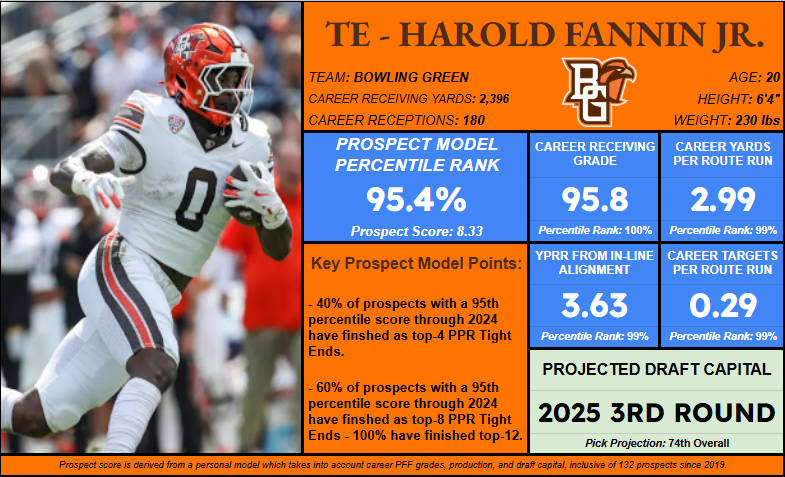
Fannin’s ranking as the consensus fifth-ranked tight end is a head-scratcher because everything about his receiving profile coming out of college says that he is on par with the best receiving tight end prospects in recent years. While there is more to NFL draft capital than just receiving prowess for tight ends, it feels very clear that Fannin has much more potential as a receiving threat than at least Elijah Arroyo and Mason Taylor, who are ranked ahead of him. At just 20 years old and with historic collegiate production to his name, Fannin’s price is right to bet on in the third round for any team looking to add a legitimate receiving threat for the position.
WR Tre Harris, Ole Miss

Harris is a curious case, where, not unlike the previously mentioned Fannin, he boasts ideal production coming out of college, but there are questions about how that will translate to the NFL. The Ole Miss vertical passing game, where they were among the league leaders in the country in 20-plus-yard passes, isn’t a translatable system to the NFL, but it doesn’t mean that Harris can’t adjust and be productive enough to be a WR2 in an NFL offense.
Harris owns strong career receiving marks, including a 97th percentile mark in receiving grade versus press coverage (89.2) while earning an excellent 0.28 career targets per route run (86th percentile) and 0.15 first-downs-plus-touchdowns per route run (89th percentile). There are still a lot of NFL teams that can use a reliable WR2 to stick on the outside and stretch the field, so Harris’ potential ideal landing spots should be plenty, and that’s going to help his fantasy value post-NFL Draft.
RB Cameron Skattebo, Arizona State
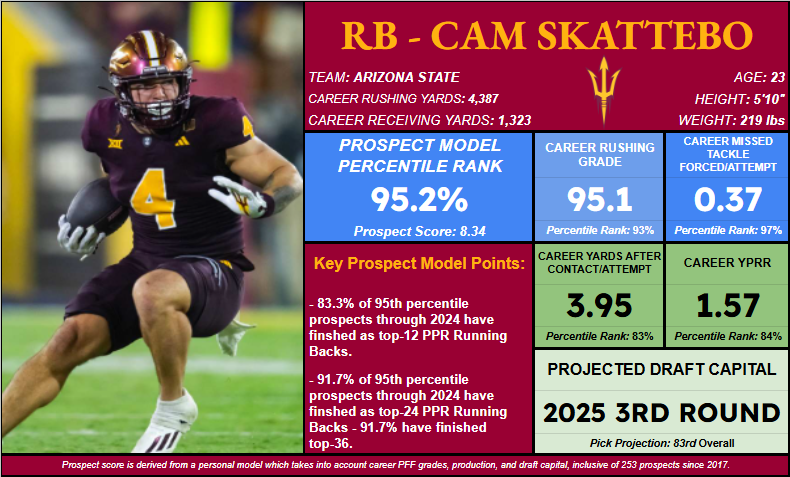
Skattebo is currently RB6 on the consensus mock draft boards, expected to go late in the third round, which is fine because it means we could be getting great value for fantasy purposes if he is going that late. Skattebo’s ability to make defenders miss and add bonus yards with the ball in his hands is second to only Ashton Jeanty in this year’s class, and while he doesn’t have blazing speed that the NFL seems to covet, it doesn’t mean he won’t be as valuable as many drafted ahead of him considering both his rushing and even receiving profile coming out of college. The hope will be that he gets drafted on Day 2, and if he gets on a team with a thin running back depth chart, that is going to be all we should need to get him back in the top-five backs of this class.
ED Princely Umanmielen, Ole Miss
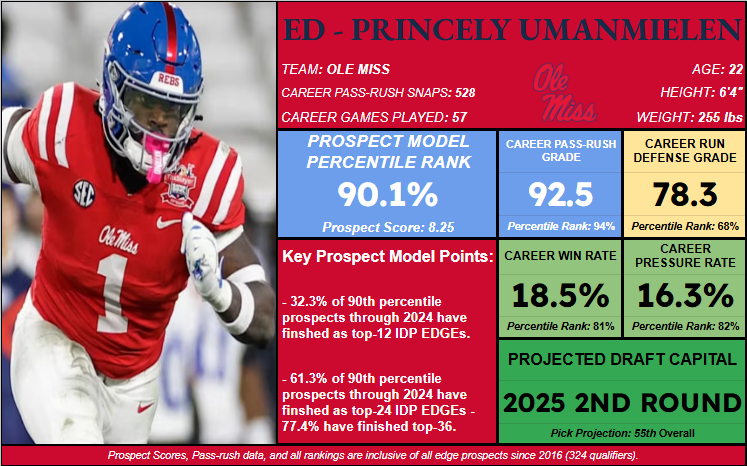
Umanmielen offers high-end pass-rushing ability that allows him to stand out amongst the other Day 2 options for the position. There are several Round 2 and Round 3 defensive linemen expected to go in this class, but Umanmielen surpasses all of them in terms of prospect score and key underlying pass-rush metrics. Barring a landing spot that he’ll be buried on the depth chart, Umanmielen should be considered one of the better bets to hit the ground running at the next level, which is naturally going to boost his IDP value.
S Jonas Sanker, Virginia
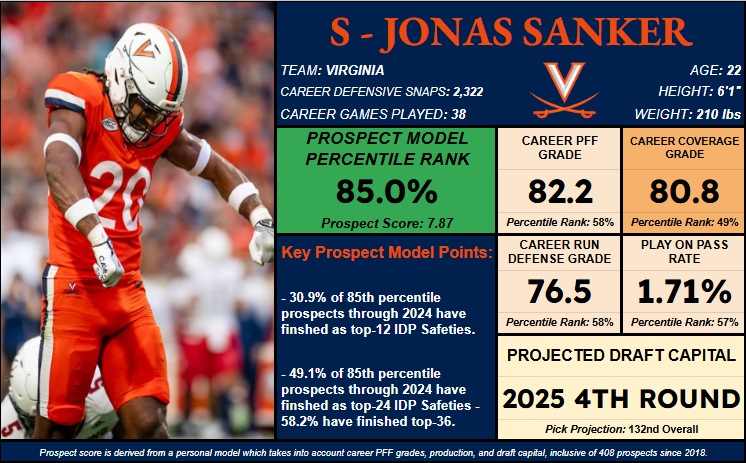
It’s not always easy to find a Day 3 sleeper at the defensive back position because the historical success rate for IDP at that position isn’t great. However, those that do emerge as IDP-relevant with that draft capital often carry unique traits that allow them to separate themselves from the typical NFL safety, specifically meaning those that are not just good enough to get on the field as starters, but can play closer to the line of scrimmage as well. For me, Sanker is the clear answer to that Day 3 question at safety because he spent 41% of his career college snaps in the box and performed well in that role. Should an NFL team view his skillset similarly and deploy him closer to the line of scrimmage, he’s as good of a bet as a Day 3 safety can be for IDP purposes.
This news was originally published on this post .






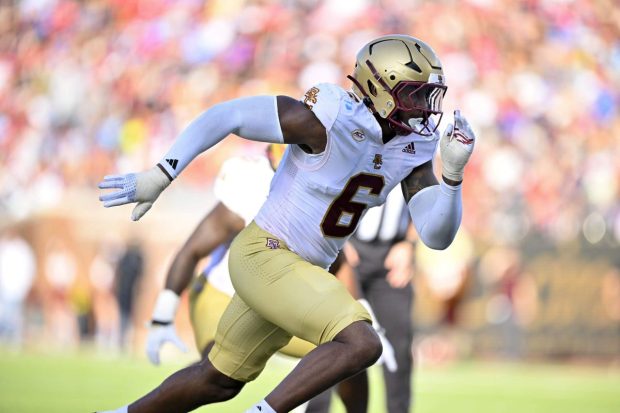
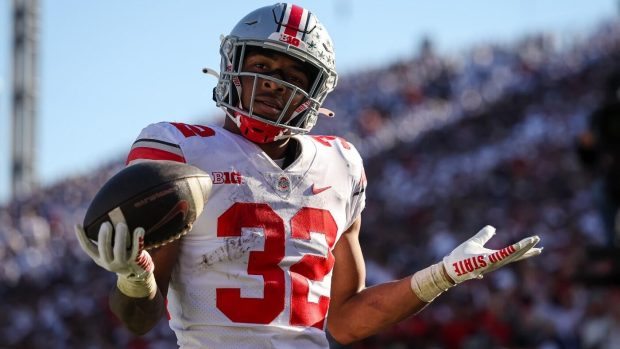

Be the first to leave a comment